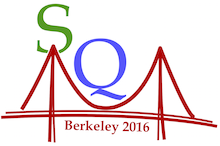Speaker
Muhammad Usman Ashraf
(Tsinghua University)
Description
STAR (Solenoidal Tracker at Relativistic Heavy Ion Collider (RHIC)) has collected data from \sqrtsNN\,\, = 39 GeV down to \sqrtsNN\,\, = 7.7 GeV Au+Au collisions to complete BES-I program in 2014. The Search for the critical point and onset of deconfinement are the main motivations for the BES-I program at RHIC. The study of strangeness production in heavy-ion collisions compared to proton-proton collisions is potentially a sensitive probe of collective energy deposition and may provide insight into the properties of the hot and dense nuclear matter [1]. Central to these studies are questions related to how hadronic properties may be modified in the hot and dense nuclear matter. For a partonic system with partially restored chiral symmetry, one can expect that strangeness is readily being produced due to the lower energy threshold for s$\overline{s}$ quark pair production. However, strangeness production may be further increased for significant baryon densities where the chemical potential related to the production of light quark is raised [2-3]. The fixed-target heavy-ion collisions extend the $\mu_B$ range from 420 MeV (\sqrtsNN\,\, = 7.7 GeV) to about 700 MeV (\sqrtsNN\,\, = 3.5 GeV). First physics results of the production of strange hadrons $K^0_{S}$, $\Lambda$ and $\Xi$ from Au+Au fixed-target collisions at \sqrtsNN\,\, = 4.5 GeV will be systematically presented. We will report the specta, yield and particle ratios of these strange hadrons. The physics implications on the collision dynamics will also be discussed. These results will be compared with AGS published results from similar collision energies.
Reference
[1] P. Koch, B. Mueller and J. Rafelski,{\it Phys. Rep. } {\bf142} 167 (1986).
[2] G. E. Brown {\it et al.,} {\it Phys. Rev. C} {\bf43}, 1881, (1991).
[3] P. Senger and H. Strobele, nucl-ex/9810007.
| On behalf of collaboration: | STAR |
|---|
Author
Muhammad Usman Ashraf
(Tsinghua University)
